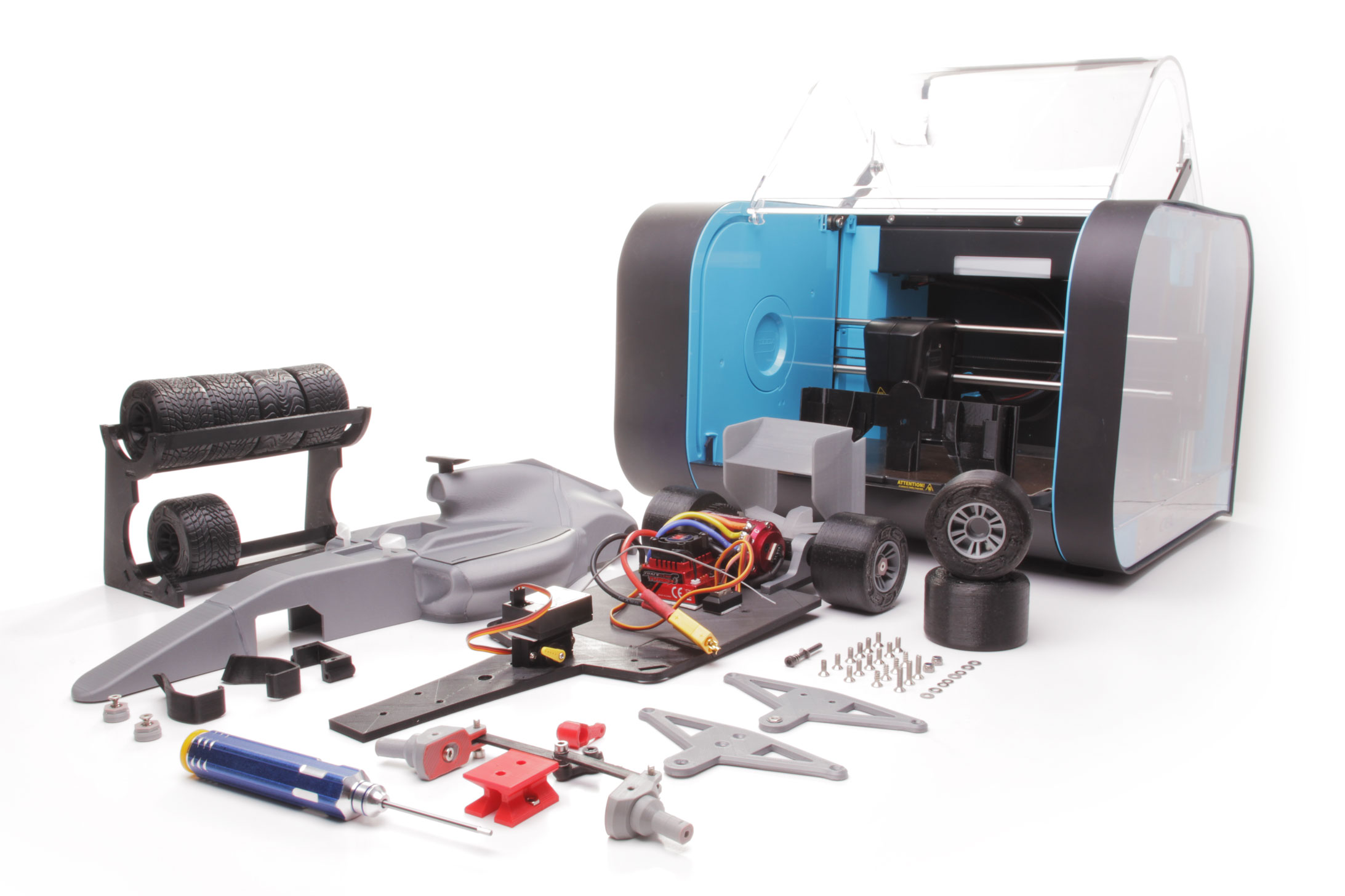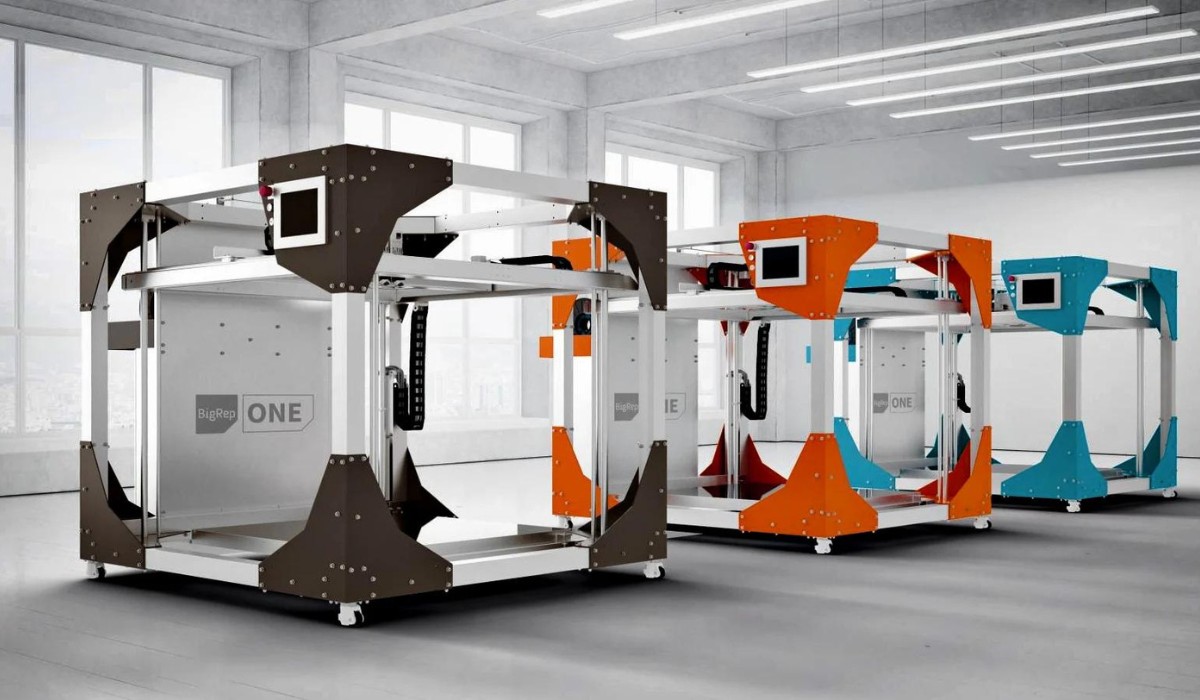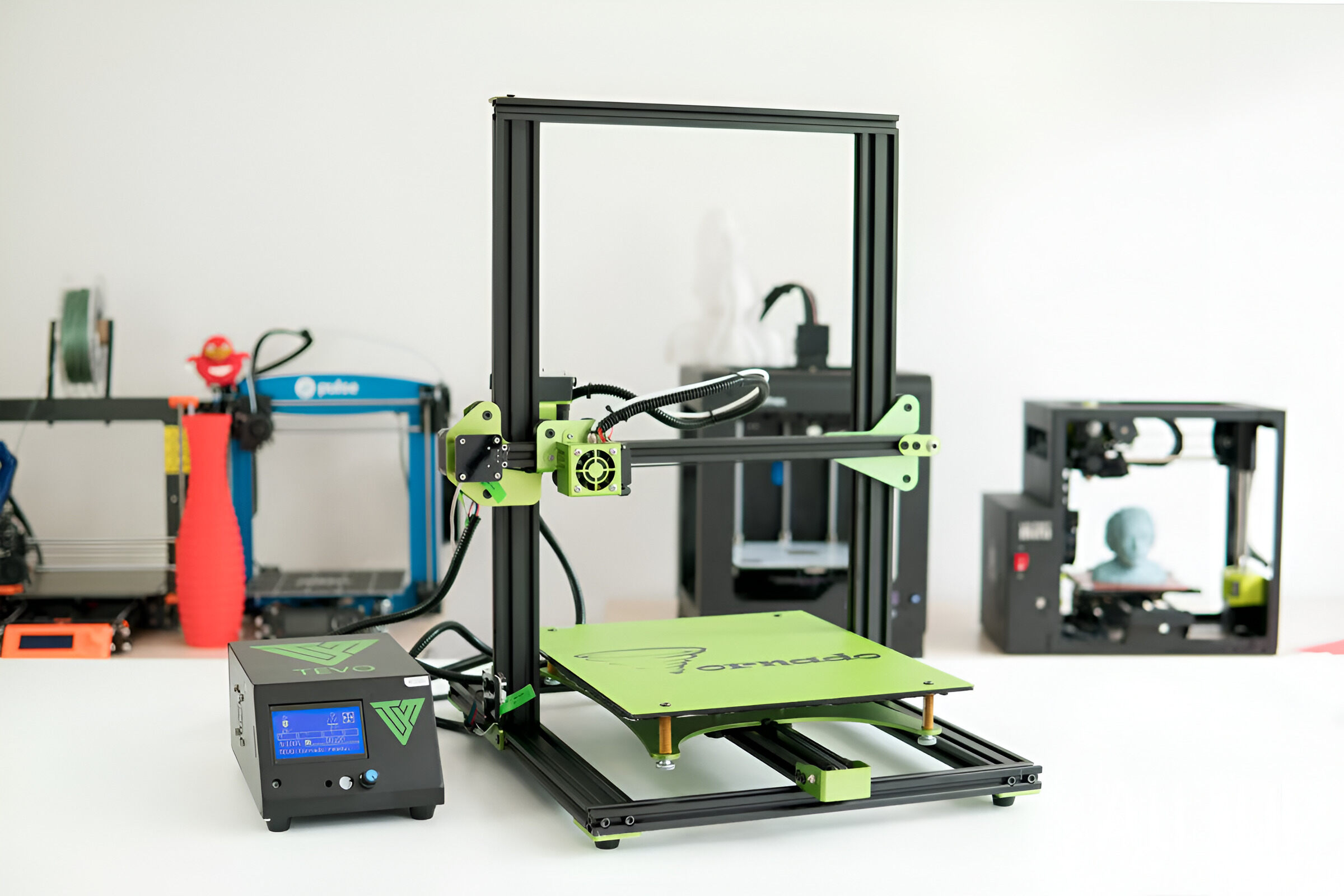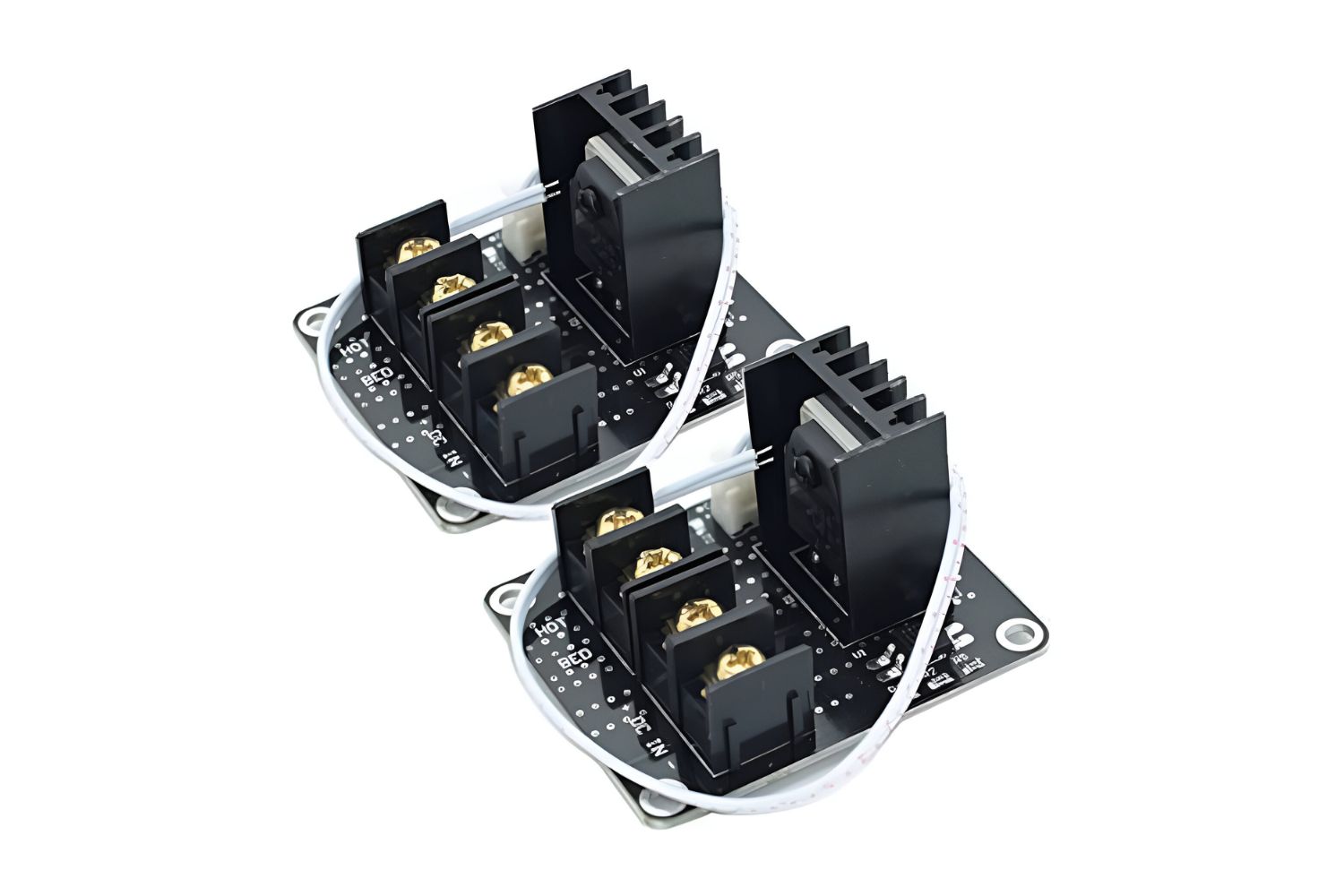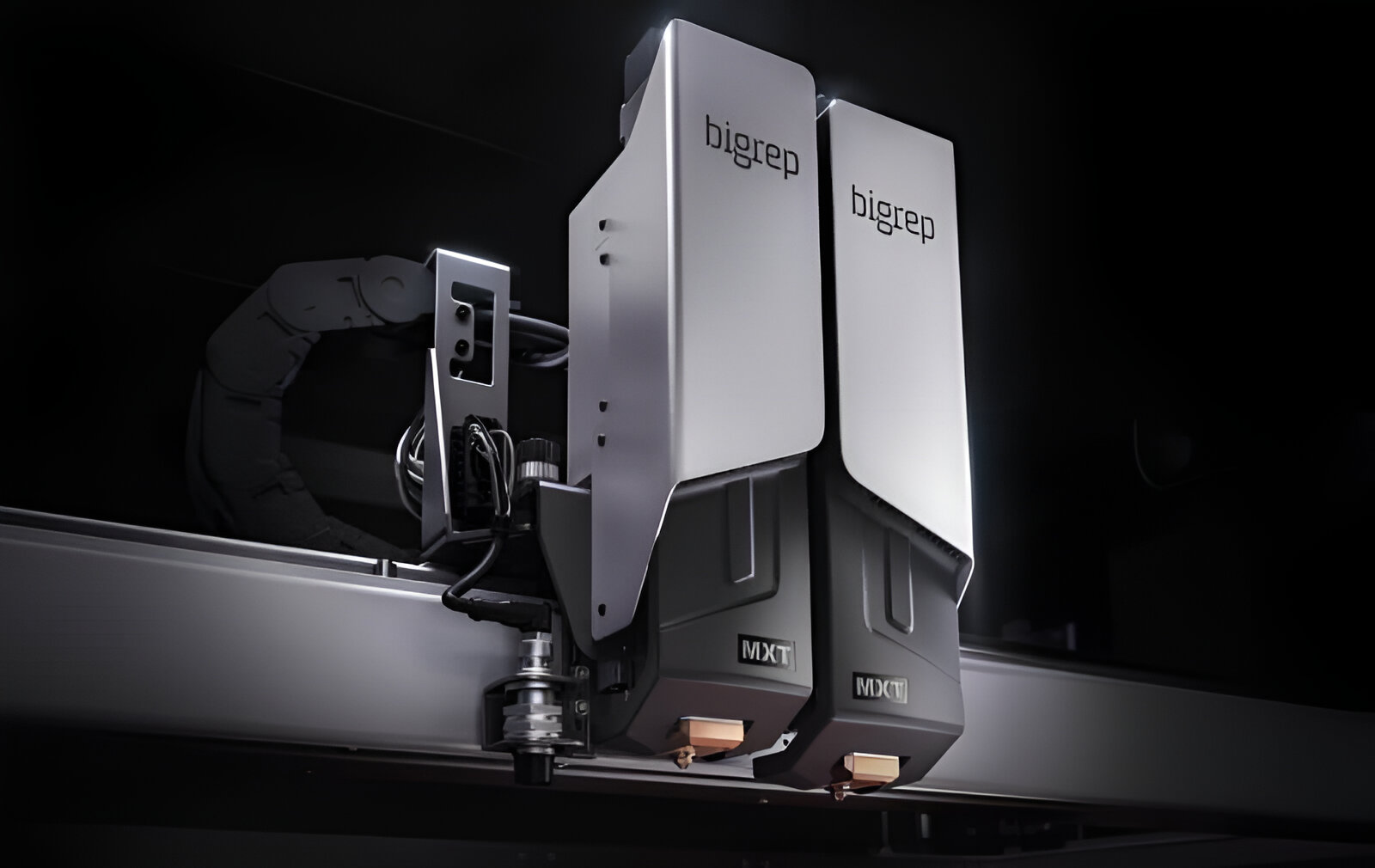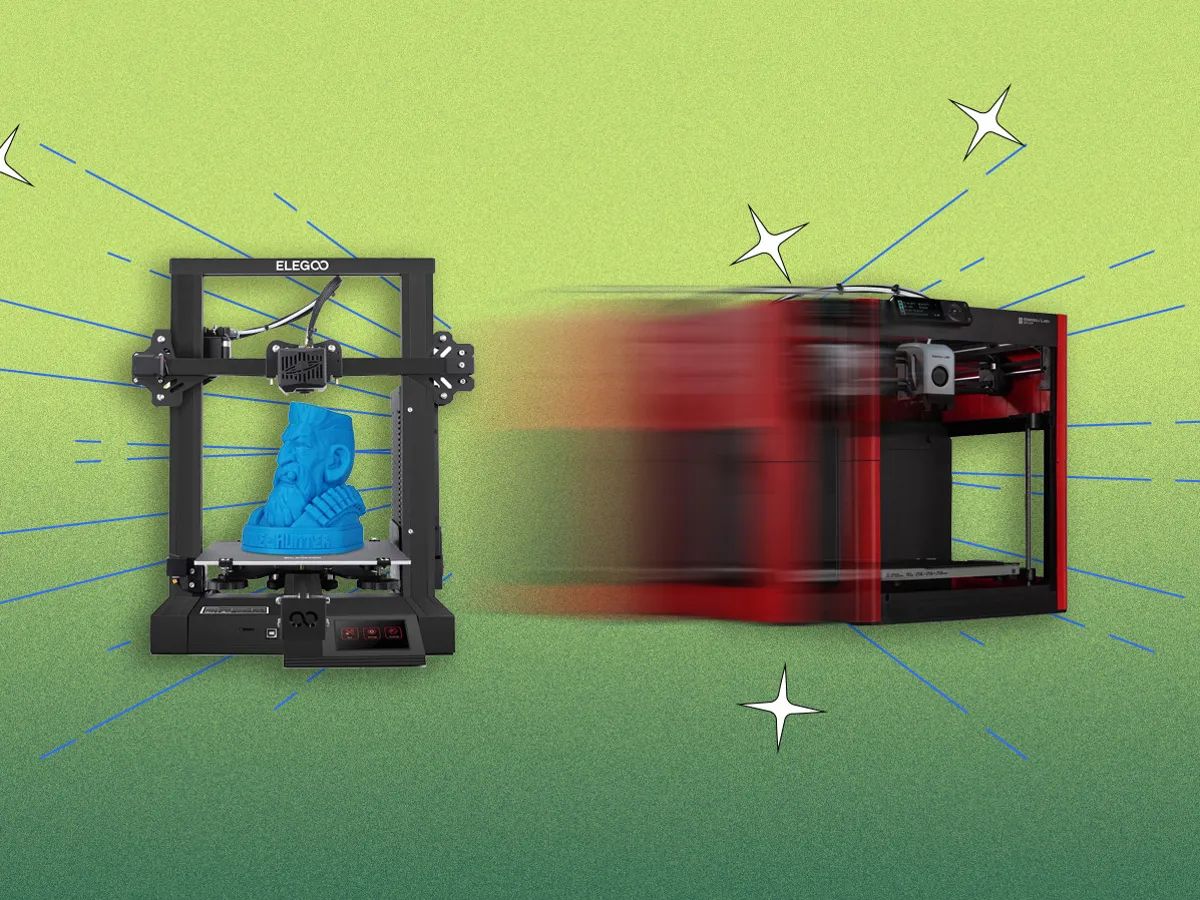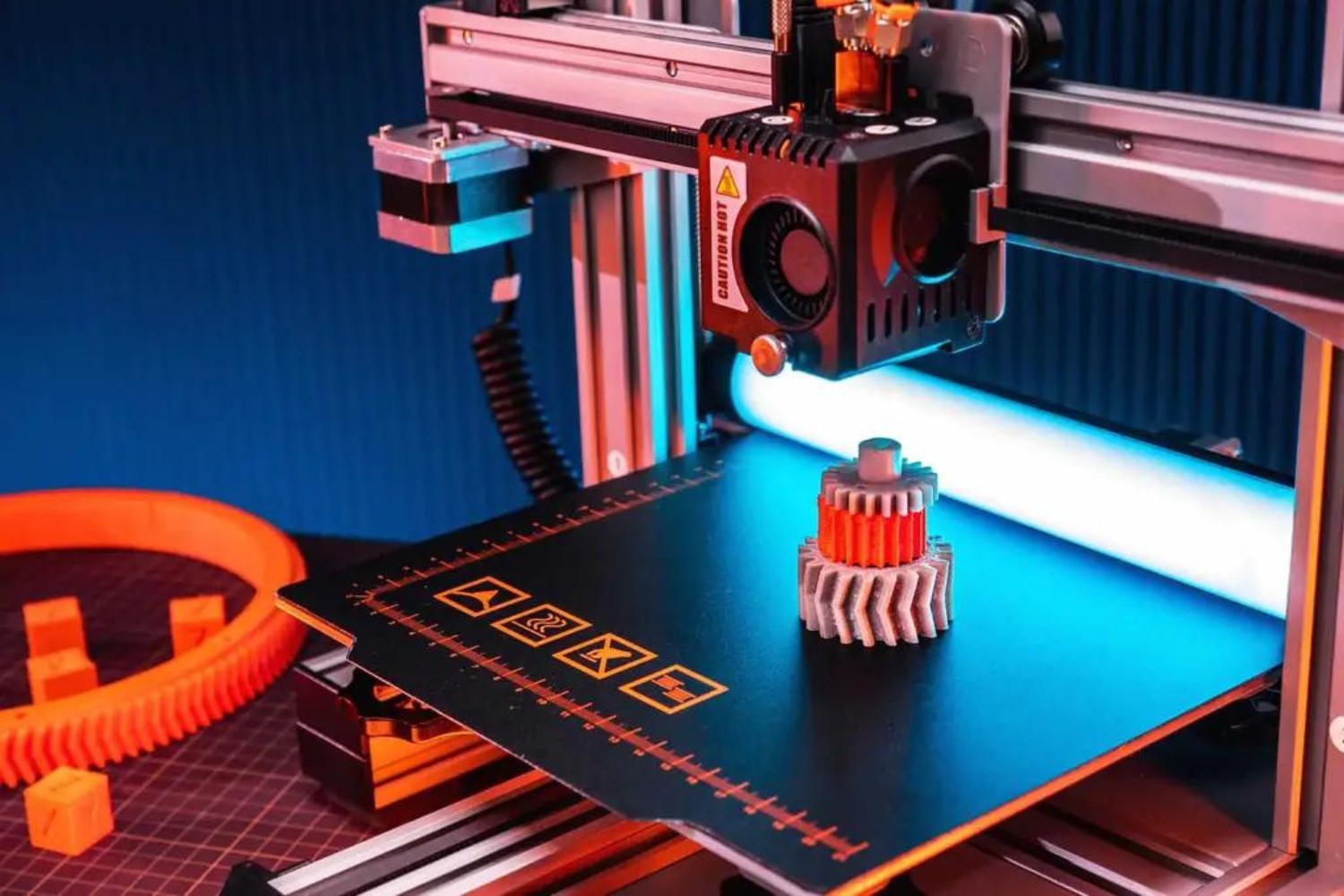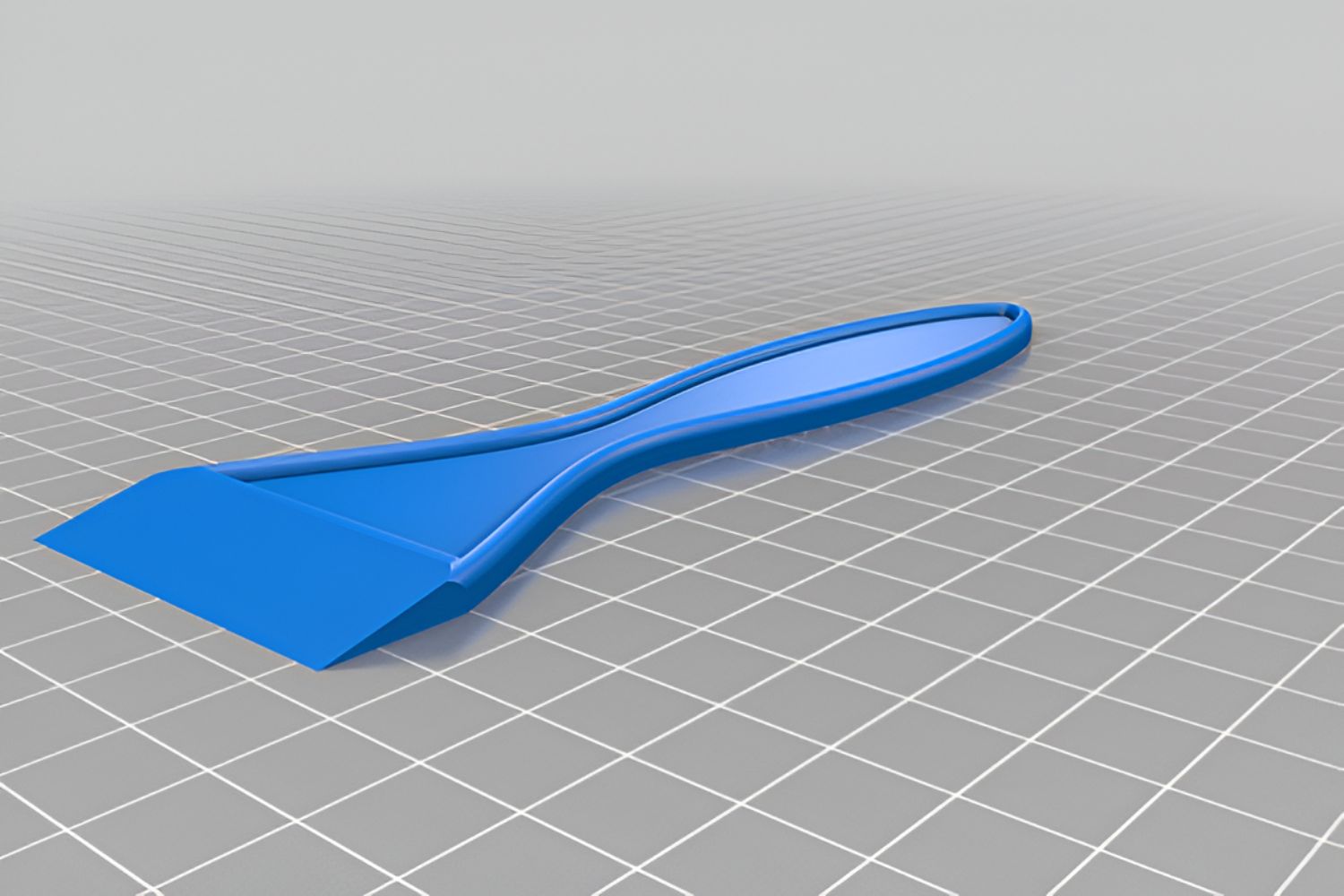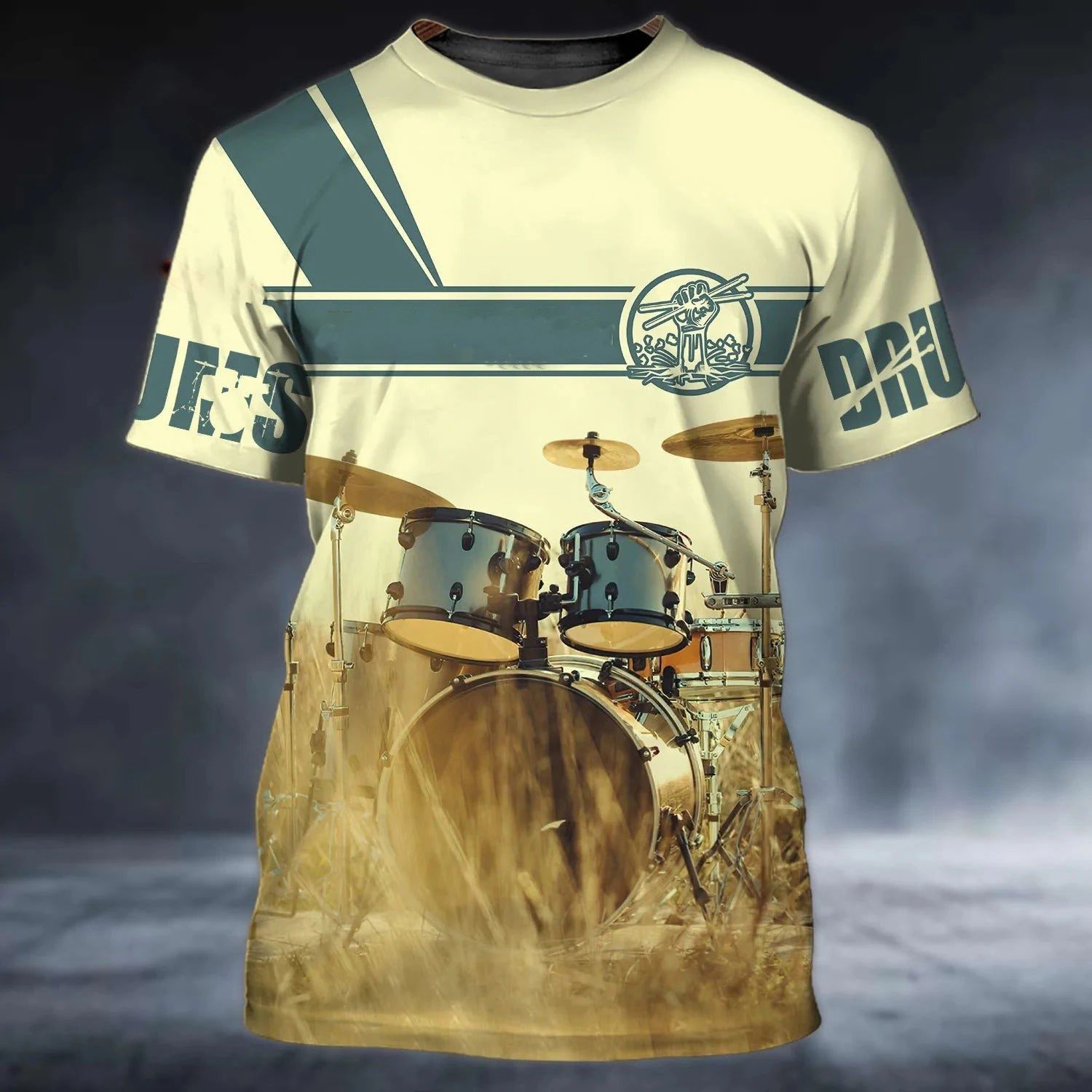Introduction
With the ever-increasing popularity of 3D printing, many enthusiasts and professionals are finding themselves faced with an important question: how big of a 3D printer do I need? The size of a 3D printer plays a significant role in determining its capabilities and the range of projects it can handle. Whether you’re looking to dive into the world of 3D printing as a hobbyist or seeking a printer for industrial applications, choosing the right size is crucial.
When it comes to 3D printers, size matters. A larger printer allows for the creation of bigger and more intricate designs, while a smaller printer is more compact and portable, making it easier to fit into smaller spaces. Each size has its own advantages and considerations, and in this article, we will explore both options to help you make an informed decision.
Before we delve into the benefits of small and large 3D printers, let’s understand the factors you need to consider when choosing the size of your 3D printer. By evaluating your needs, available space, and budget, you can decide which printer size best suits your requirements.
So, whether you’re a hobbyist looking to create small trinkets or a professional aiming to produce large-scale prototypes, keep reading to discover which size of 3D printer is right for you.
Considerations for Choosing the Size of a 3D Printer
When it comes to choosing the size of your 3D printer, several key factors should be taken into consideration. These factors will help you determine what size will best suit your needs and ensure you can achieve the desired results.
1. Project Size: Consider the size of the objects you intend to print. If you primarily work on small-scale projects, a smaller printer may be sufficient. However, if you plan to print larger items or prototypes, a larger printer will be necessary to accommodate those dimensions.
2. Available Space: Assess the area where you plan to set up your 3D printer. If you have limited space, a smaller printer will be more practical and easier to fit into your workspace. On the other hand, if you have ample space available, a larger printer can be a great addition.
3. Portability: If you need the flexibility to move your 3D printer from one location to another, a smaller and more portable printer would be more suitable. This is particularly important for those who attend events, workshops, or exhibitions and need to transport their printer frequently.
4. Budget: The size of a 3D printer can significantly impact its cost. Generally, larger printers tend to be more expensive due to the additional materials and components required to build them. Consider your budget and ensure that you can afford the printer size that meets your requirements.
5. Type of Printing: Some technologies, such as Fused Deposition Modeling (FDM), may have limitations on the build volume depending on the printer model. If you have a particular printing technology in mind, check the specifications and make sure it can accommodate the size of your intended prints.
By evaluating these considerations, you can determine the ideal size for your 3D printer. Remember, it’s essential to strike a balance between your desired project size, available space, portability needs, budget, and the printing technology you plan to use.
Benefits of a Small 3D Printer
While larger 3D printers may have their advantages, small 3D printers offer their own unique benefits. Here are some reasons why you might consider a smaller 3D printer:
1. Cost-Effective: Small 3D printers are often more affordable compared to their larger counterparts. If you’re on a tight budget or just starting with 3D printing, investing in a smaller printer can be a cost-effective option.
2. Space-Saving: If you have limited space in your workshop, office, or home, a small 3D printer is a practical choice. Its compact size makes it easier to fit into tight spaces, allowing you to set up your printing station without the need for excessive room.
3. Portability: Small 3D printers are lightweight and portable, making them ideal for users who need to move their printers frequently. Whether you’re attending maker fairs, workshops, or simply need to relocate your printer within your workplace, a small printer offers convenience and flexibility.
4. Quick Set-Up: Setting up a small 3D printer is generally quicker and easier compared to larger models. With fewer components and a more compact design, you’ll spend less time assembling and calibrating your printer, allowing you to start printing sooner.
5. Energy Efficiency: Smaller printers typically consume less power compared to larger ones. This not only helps reduce your electricity bill but also makes them more environmentally friendly. If sustainability is a concern for you, a small 3D printer may be a preferable choice.
6. Versatility: Don’t underestimate the capabilities of a small 3D printer. While they may not be able to produce large-scale prototypes, they can still handle a wide range of smaller projects, such as jewelry, figurines, personalized accessories, and functional prototypes.
In summary, small 3D printers offer affordability, space-saving benefits, portability, quick set-up, energy efficiency, and versatility. These advantages make them an excellent choice for beginners, hobbyists, and those with limited space or budget constraints. Consider your specific needs and goals to determine if a small 3D printer is the right fit for you.
Benefits of a Large 3D Printer
When it comes to tackling big projects and pushing the boundaries of 3D printing, a large 3D printer offers a range of benefits. Here are some advantages of opting for a larger printer:
1. Printing Size: One of the most obvious benefits of a large 3D printer is the ability to create larger objects. Whether you’re working on architectural models, industrial prototypes, or functional parts, a bigger build volume allows you to bring your visions to life in their full-scale glory.
2. Detailed and Complex Designs: A larger printing area provides more space for intricate detailing and complex designs. With a large 3D printer, you can capture finer details and create intricate geometries without having to compromise on the quality of your prints.
3. Printing Efficiency: Larger printers can often print multiple smaller objects or batch print larger parts simultaneously. This means you can optimize production time by reducing the number of print runs required, resulting in improved efficiency and faster turnaround times.
4. Reduced Assembly Requirements: With more space to print larger objects, a big 3D printer can produce items in a single piece, minimizing the need for assembly or joining smaller printed parts. This reduces the risk of potential weak points and ensures structural integrity.
5. Compatibility with Diverse Materials: Some advanced and industrial-grade materials may require larger build volumes to achieve optimal printing results. If you plan to work with specialized materials that require a larger build area, a large 3D printer will provide the space necessary to accommodate those materials.
6. Scalability: As your skills and projects evolve, a large 3D printer allows room for growth. It provides the flexibility to take on larger and more complex projects as you gain experience, expand your capabilities, and explore new applications in various industries.
While large 3D printers may come at a higher price point and require more space, the benefits they offer in terms of printing size, detailed designs, printing efficiency, reduced assembly requirements, material compatibility, and scalability make them a worthy investment for professionals, businesses, and advanced enthusiasts.
Consider your specific needs, the scale of your projects, and your long-term goals to determine if a large 3D printer is the right choice for you.
Factors to Consider When Determining the Size of a 3D Printer
Choosing the right size for your 3D printer is crucial to ensure it fulfills your needs and aligns with your printing goals. Here are some key factors to consider when determining the size of your 3D printer:
1. Project Scope: Consider the scope of your projects and the size of objects you envision printing. If you primarily work on small-scale models or need precise detailing, a smaller printer may be suitable. However, if you plan to print larger prototypes or functional parts, a larger printer with a larger build volume will be necessary.
2. Available Space: Evaluate the space you have available for your printer. Measure the area where you plan to set it up and consider the dimensions of the printer itself. Ensure that the chosen size can fit comfortably in your workspace without hindering your ability to work or move around.
3. Printing Technology: Different printing technologies have different capabilities in terms of build volume. Some technologies, such as Stereolithography (SLA) or Digital Light Processing (DLP), may have limitations on the size of prints due to the size of their build platforms. Be aware of the build volume specifications of the printer models you are considering.
4. Budget: The size of a 3D printer can have an impact on its cost. Larger printers and those with larger build volumes are generally more expensive due to the additional materials and components required. Determine your budget and ensure you can afford the size that aligns with your needs.
5. Support and Maintenance: Consider the availability of support and maintenance services for the size of printer you choose. Larger printers often require more technical expertise and may have specific requirements for maintenance and troubleshooting. Ensure that you have access to trained technicians or resources to address any issues that may arise.
6. Future Growth: Think about your long-term goals and whether your needs may change in the future. If you foresee expanding your projects or taking on larger-scale applications, it might be wise to invest in a printer with a larger build volume from the start, rather than upgrading later on.
By considering these factors, you can determine the optimal size for your 3D printer that aligns with your project requirements, available space, budget, printing technology, and future scalability. Take your time to evaluate each aspect and choose a size that will allow you to achieve your desired results and grow your 3D printing capabilities.
Popular Sizes of 3D Printers and Their Recommended Uses
3D printers come in various sizes, each designed to cater to specific needs and applications. Here are some popular sizes of 3D printers and their recommended uses:
Small Printers:
Small 3D printers typically have a build volume of around 100mm x 100mm x 100mm or smaller. They are ideal for beginners, hobbyists, and those with limited space or budget constraints. Recommended uses for small printers include:
– Prototyping small objects and components
– Creating intricate jewelry and accessories
– Designing and printing small-scale figurines and models
– Producing customized phone cases, keychains, and other small accessories
Medium Printers:
Medium-sized 3D printers typically offer a build volume ranging from 200mm x 200mm x 200mm to 300mm x 300mm x 300mm. These printers strike a balance between size, affordability, and versatility. Recommended uses for medium printers include:
– Designing and prototyping functional parts and components
– Creating larger-scale models and figurines
– Printing architectural prototypes and scale models
– Building small furniture pieces and home decor items
Large Printers:
Large 3D printers have build volumes ranging from 300mm x 300mm x 300mm and beyond. They are suited for professional applications, industrial prototyping, and large-scale projects. Recommended uses for large printers include:
– Printing life-size sculptures and statues
– Prototyping large industrial parts and machinery components
– Creating architectural models and building prototypes
– Producing functional prototypes for product design and development
Industrial Printers:
Industrial-grade 3D printers are designed for high-volume, high-precision manufacturing. They have exceptionally large build volumes, often exceeding 1,000mm x 1,000mm x 1,000mm, and are capable of printing with a wide range of materials. Recommended uses for industrial printers include:
– Large-scale manufacturing of end-use products
– Printing aerospace and automotive components
– Creating molds, tooling, and fixtures
– Rapid prototyping and production of complex assemblies
It’s important to note that these are general recommendations, and the suitability of a particular size will depend on the specific requirements of each project. Consider the size of your desired prints, available space, budget, and the level of detail and precision needed when selecting the size of your 3D printer.
What Can Be Printed with Different Sizes of 3D Printers
The size of a 3D printer directly impacts the types of objects that can be printed. Here is an overview of what can be printed with different sizes of 3D printers:
Small Printers:
Small 3D printers are capable of producing intricate and detailed objects on a smaller scale. Some examples of what can be printed with small printers include:
– Miniature figurines and models
– Jewelry and accessories
– Phone cases and small-scale functional parts
– Decorative items, such as vases and figurines
– Small tools and prototypes for testing purposes
Medium Printers:
Medium-sized 3D printers offer a balance between size and versatility. They are capable of printing a wider range of objects, including:
– Small to medium-sized prototypes and functional parts
– Customized home decor items
– Household tools and gadgets
– Architectural models and scale replicas
– Medium-sized figurines and collectibles
Large Printers:
Large 3D printers are ideal for printing bigger objects and prototypes. The following are examples of what can be printed with large printers:
– Life-size sculptures and statues
– Large-scale architectural models
– Prototypes of industrial machinery and equipment
– Furniture and interior design elements
– Functional prototypes for product development
Industrial Printers:
Industrial-grade 3D printers are capable of producing large, complex, and high-strength objects. They can print a wide range of items, including:
– Aerospace and automotive components
– Industrial molds and tooling
– Advanced prototypes for engineering testing
– Complex assemblies and intricate designs
– Customized medical implants and devices
It’s important to note that the above examples are not exhaustive, and the possibilities for printing with different sizes of 3D printers are vast. The specific objects that can be printed will depend on the capabilities and specifications of each printer, as well as the chosen materials and printing technologies.
Tips for Purchasing the Right-Sized 3D Printer
Choosing the right-sized 3D printer requires careful consideration of your needs and goals. Here are some tips to help you make a well-informed decision:
1. Define Your Printing Goals: Determine the types of projects you intend to tackle with your 3D printer. Consider the size and complexity of the objects you plan to print, as well as any specific features or functionalities you require.
2. Evaluate Your Available Space: Measure the area where you intend to set up your 3D printer and ensure it can accommodate the chosen printer size. Take into account not only the printer’s dimensions but also the space required for proper ventilation, filament storage, and any other accessories.
3. Consider Budget and Cost: Set a budget for your 3D printer purchase, taking into account not just the upfront cost of the printer itself but also ongoing expenses such as maintenance, filament, and accessories. Remember, larger printers generally come with higher costs.
4. Research and Compare Printer Specifications: Explore different 3D printer models and compare their specifications, including build volume, printing resolution, supported materials, and printing technology. Prioritize models that align with your desired project size and quality requirements.
5. Read Reviews and Seek Recommendations: Look for reviews and testimonials from users who have firsthand experience with the 3D printers you are considering. Online communities and forums can be valuable sources of information and can provide insights into the pros and cons of different printers.
6. Consider Future Expansion: Think about your long-term goals and whether your needs may evolve over time. If you anticipate scaling up your projects or venturing into larger applications, it may be prudent to invest in a printer with a larger build volume from the start.
7. Check Manufacturer Support and Warranty: Review the manufacturer’s customer support options, warranty coverage, and availability of spare parts. A reputable manufacturer with good customer service can provide assistance in case of technical issues or component failures.
8. Consider DIY or Upgradable Options: If you have technical skills and enjoy tinkering, you may consider a DIY 3D printer kit or a printer that allows for future upgrades. This can provide flexibility and the opportunity to customize your printer based on your specific needs.
9. Seek Input from Experienced Users: Reach out to experienced 3D printing enthusiasts or professionals to seek their advice and recommendations. They can offer insights based on their own experiences and help you make a more informed decision.
Remember, selecting the right-sized 3D printer is not just about the physical dimensions but also about finding a printer that aligns with your specific printing goals, available space, budget, and future aspirations. Take your time, do your research, and consider all relevant factors before making your purchase.
Conclusion
Choosing the right-sized 3D printer is a critical decision that can significantly impact your 3D printing journey. It’s important to evaluate your needs, available space, budget, and future aspirations to ensure you select a printer that aligns with your goals.
Considerations such as project size, available space, portability, and budget will guide you towards the appropriate size for your 3D printer. Whether you opt for a small, medium, large, or industrial-grade printer, each comes with its own set of benefits and recommended uses.
Small printers are affordable, space-saving, and often suitable for hobbyists and beginners. Medium-sized printers strike a balance between size and versatility, catering to a wider range of projects. Large printers offer the ability to create bigger prototypes and objects, while industrial-grade printers are designed for high-volume manufacturing and complex applications.
Additionally, factors such as support and maintenance, printing technology, and future scalability should also be taken into account when determining the right-sized 3D printer for your needs.
By following the tips provided, including defining your printing goals, evaluating your available space, researching and comparing printer specifications, seeking recommendations, and considering future expansion possibilities, you can make a well-informed decision that best suits your requirements.
Remember, the size of the 3D printer is just one aspect to consider. It’s also important to select a printer from a reputable manufacturer with good customer support, as well as to familiarize yourself with the necessary skills and resources for successful 3D printing.
Now that you have a better understanding of the factors to consider and the benefits associated with different sizes of 3D printers, you can confidently embark on your 3D printing journey and unleash your creativity with the right-sized printer by your side.







